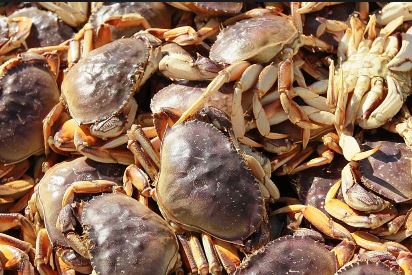‘Rule of Thumb’ Management Approach Is Wrong For Forage Fish, Dr. Ray Hilborn Tells U.S. Senate
 Saving Seafood interviews Dr. Ray Hilborn about forage fish management ahead of his testimony before the Senate Commerce Subcommittee on Oceans, Atmosphere, Fisheries and Coast Guard.
Saving Seafood interviews Dr. Ray Hilborn about forage fish management ahead of his testimony before the Senate Commerce Subcommittee on Oceans, Atmosphere, Fisheries and Coast Guard.
WASHINGTON (Saving Seafood) – October 31, 2017 – At a hearing of the U.S. Senate Commerce Subcommittee on Oceans, Atmosphere, Fisheries and Coast Guard last week, respected fisheries scientist Dr. Ray Hilborn testified that fisheries managers “can do better than a one-size-fits-all” approach to managing forage fish. He also said there was “no empirical evidence to support the idea that the abundance of forage fish affects their predators.”
Dr. Hilborn’s comments came in response to questioning from Sen. Roger Wicker (R-MS) about whether fisheries managers should manage forage fish according to a “rule of thumb” approach, where fisheries are managed according to a set of broad ecological and management principals, or a “case-by-case” approach, where management is guided by more species-specific information.
Dr. Hilborn, a professor at the University of Washington’s School of Aquatic and Fishery Sciences, was part of a team of top fisheries scientists that recently examined these issues, as well as what effects fishing for forage fish species had on predator species. Their research indicated that previous studies, like a 2012 report from the Lenfest Forage Fish Task Force, may have overestimated the strength of the predator-prey relationship.
Before the hearing, Dr. Hilborn spoke with Saving Seafood about his research and his message for lawmakers.
“It’s very clear that there really are no applicable rules of thumb, that every system is independent [and] behaves differently, and we need to have the rules for each individual forage fish fishery determined by looking at the specifics of that case,” Dr. Hilborn told Saving Seafood.
He also discussed his team’s finding that forage fish abundance has little impact on their predators. They looked at nearly all U.S. forage fish fisheries, including the California Current system and Atlantic menhaden, and concluded that predator species generally pursue other food sources when the abundance of any one forage species is low.
“The predators seem to go up or down largely independent of the abundance of forage fish,” Dr. Hilborn said, adding, “For Atlantic menhaden, for their major predators, the fishery has reasonably little impact on the food that’s available to them.”
Another key message Dr. Hilborn had for the Subcommittee was that fisheries managers must determine what they want to accomplish so that scientists can advise them accordingly.
“The time has come to refocus our fisheries policy on what we actually want to achieve because rebuilding is only a means to an end,” Dr. Hilborn told Saving Seafood. “Do we want to maximize the economic value of our fisheries? Do we want to maximize jobs? Do we want to maximize food production?”
In his testimony, Dr. Hilborn praised U.S. fisheries policy that has “led to rebuilding of fish stocks and some of the most successful fisheries in the world.” He attributed this success to a variety of factors, including funding of NOAA, regionalizing fisheries management decisions, and requiring managers to follow science advice. As a result, overfishing should no longer be the top priority for fisheries managers, he testified.
“The major threats to U.S. fish stock and marine ecosystem biodiversity are now ocean acidification, warming temperatures, degraded coastal habitats, exotic species, land based run off, and pollution,” Dr. Hilborn testified. “Overfishing remains a concern for a limited number of stocks but should not continue to be the most important concern for U.S. federal fisheries policy.”
The hearing was the latest in a series examining reauthorization of the Magnuson-Stevens Fishery Conservation and Management Act, the nation’s supreme fisheries law. It was organized by subcommittee chairman Sen. Dan Sullivan (R-AK), and focused on fisheries science.
Originally posted: Saving Seafood Inc.




